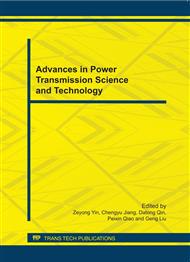p.584
p.590
p.594
p.598
p.602
p.606
p.611
p.615
p.619
Influence Factors and Calculating Methods for Gear Windage Power Loss
Abstract:
Based on making some analyses and comparisons about influence factors and existing calculating methods for gear transmission windage loss, it gives practical area and application situation of these calculating methods in this paper. Also it presents some suggestions on some possible problems when calculation. The results can provide a basic reference and guidance to evaluate and optimize design for designer.
Info:
Periodical:
Pages:
602-605
Citation:
Online since:
August 2011
Authors:
Price:
Сopyright:
© 2011 Trans Tech Publications Ltd. All Rights Reserved
Share:
Citation:


